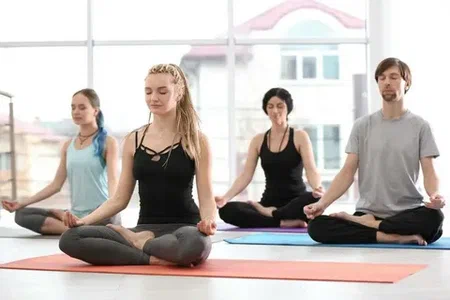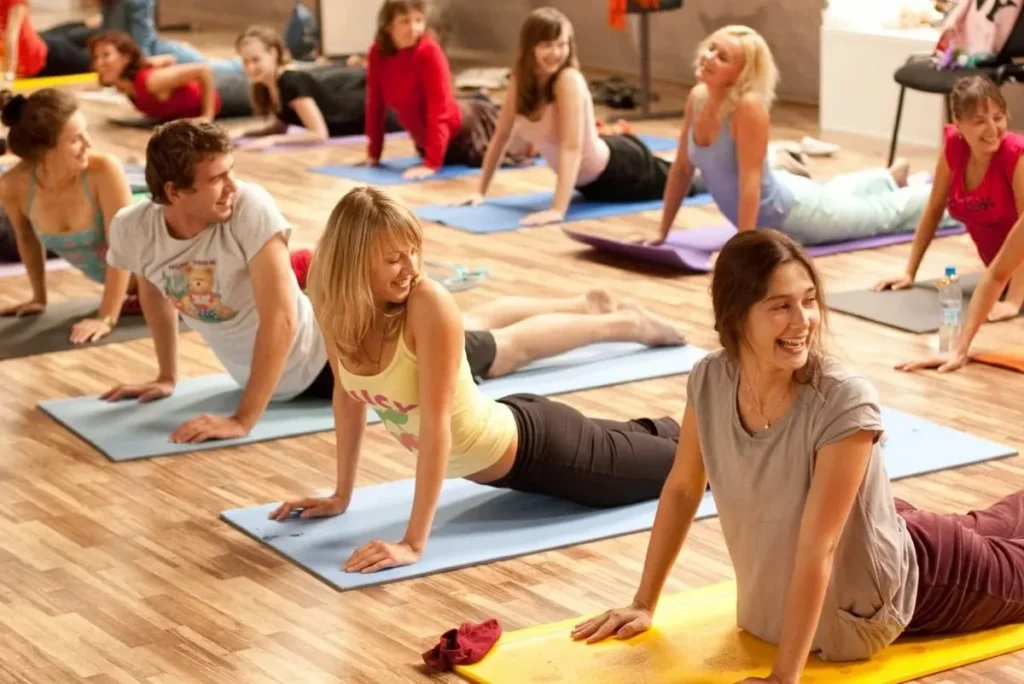
Mastering the Elements: A Guide to Outdoor Beach Yoga
The sun had barely risen when the mat hit the sand. The waves whispered nearby, and the breeze carried a calm that no studio wall could contain. This was not a typical morning routine, it was beach yoga. And for someone used to four walls and fluorescent lights, it felt like a breath of new life.
But not every start came easy. The uneven sand threw off balance. The sound of the sea, once relaxing, became distracting. Without the comfort of routine, focus was harder to find. It felt like starting from scratch, even for someone who thought they had it all figured out.
That morning taught me something valuable: doing yoga outdoors is a different kind of practice. It takes new habits, fresh perspective, and a deeper connection to the body and surroundings. Beach yoga was not just about movement. It was about learning to breathe where life feels most alive.
Why the Beach Changes Everything
Practicing yoga indoors provides control. The lighting, temperature, and surfaces are predictable, which can help create a consistent experience. But step onto the sand, and everything shifts. The beach environment adds natural elements that challenge even the most seasoned practitioners.
Wind can make balancing harder. The sun warms the body in new ways. Sand shifts underfoot and forces the core to stay active. This constantly changing surface is not a drawback, it is a teacher. It demands attention, presence, and strength from every muscle.
With beach yoga, no two sessions are alike. The ocean might be loud one day and calm the next. Each wave and gust of wind reminds the body to adapt. That’s where the true value lies. It invites growth and awareness through nature itself.
Grounding in the Elements
Sand beneath the feet offers more than just a scenic view. It becomes part of the practice. Unlike hardwood floors, sand creates resistance and softens impact. This helps reduce joint stress while building strength in areas often overlooked.
There is also a grounding effect that comes from connecting to the earth. Practicing barefoot on sand sends sensory signals to the brain and calms the nervous system. It helps the mind slow down and pay attention to movement, breath, and posture.
Even without realizing it, practitioners often feel more connected during beach yoga. The environment supports a slower, more mindful pace. It encourages stillness between movements and more conscious breathwork. It’s a subtle shift that carries over long after the session ends.
Breathing with the Ocean
One of the greatest benefits of beach yoga is learning to breathe in rhythm with the sea. The ocean’s steady sounds can become a natural metronome for breathwork. Each inhale follows the wave’s pull, each exhale aligns with its retreat.
This rhythmic practice makes it easier to focus. Distractions fade when breath matches the world around it. The sea encourages a deeper connection to the present moment, something often lost in indoor routines or busy schedules.
Salt air also contributes to better breathing. It opens the lungs, cleanses the airways, and invites full, deep breaths. Over time, practicing beach yoga in this environment can improve respiratory habits and create a lasting calm in both body and mind.
Poses That Work Best on Sand
Not every pose translates perfectly to beach yoga. The shifting ground can make advanced balancing difficult at first. But certain movements are more effective on sand, using its softness and resistance as a strength-building tool.
Sun salutations, warriors, and seated twists are often well suited for the beach. They activate large muscle groups while allowing stability through the feet and hands. Planks and downward dogs also feel different, offering more intensity as the body works to stay in alignment.
Using a towel or yoga mat can help in the beginning, especially with transitions or poses that need grip. As comfort builds, practicing directly on the sand becomes easier and more enjoyable. The texture becomes part of the movement, not a barrier to it.
Timing Makes a Difference
The time of day impacts every beach yoga session. Early mornings tend to offer cooler temperatures, gentle light, and fewer distractions. It creates the ideal environment for meditation, breathwork, and slow flows.
Midday brings stronger sun and heat, which may challenge endurance but can also deepen flexibility. Muscles warm quickly, allowing for deeper stretches. It’s important to stay hydrated and wear sun protection during these sessions.
Evenings, with their golden skies and cooler sand, offer another layer of calm. As the day winds down, beach yoga becomes more about release than effort. It provides closure to the day and prepares the body for rest.
Building a Consistent Outdoor Practice
Starting a consistent beach yoga practice takes planning. It begins with small, regular sessions rather than long, intense flows. Even ten minutes of mindful movement can make a lasting impact.
Bringing the right gear helps build confidence. Light clothing, sunscreen, a water bottle, and an optional towel or mat are all useful. It’s not about perfection—it’s about building comfort over time.
Some days may feel harder than others. The wind may be strong, the sand uneven, or the sun too hot. But those challenges become part of the growth. Practicing regularly, even once or twice a week, builds both physical and mental resilience.
Mindfulness Beyond the Mat
One of the most lasting effects of beach yoga is what happens after the session ends. The calm, focus, and clarity developed during practice extend into daily life. The environment teaches more than poses it teaches presence.
That presence shapes how moments are experienced. There is more awareness in breathing, posture, and reactions. It also becomes easier to pause and reflect, rather than rush through the day.
In time, beach yoga becomes less of an activity and more of a lifestyle. It becomes a reminder that calm can be found anywhere, even in the most unpredictable settings. That’s the quiet strength it offers a lasting sense of balance that begins on the shore.
Conclusion
Beach yoga is more than a workout. It is a complete mind body reset that helps reconnect with nature, improve physical strength, and find inner calm. Whether it is about shaking off stress or simply soaking in the sea air, this practice adds something special to any wellness routine.
As routines get busier and the world keeps moving fast, time spent on the sand brings peace and purpose back to the present moment. The waves become a rhythm, the breeze a breath, and the shoreline a sanctuary.
Looking to add more balance and intention to everyday life? Join Inlet Yoga for beach yoga sessions that combine movement, mindfulness, and the healing power of the ocean.
Reserve a spot today and bring stillness back to your story.
FAQs
What is beach yoga?
Beach yoga is outdoor yoga practiced on sand, offering a peaceful, natural setting and added balance challenge.
Can beginners try beach yoga?
Yes, beach yoga is beginner friendly and helps build core strength and mindfulness.
What should I bring to a beach yoga session?
Bring a towel, water, sunscreen, and comfortable clothes; a mat is optional.
Is beach yoga good for stress relief?
Absolutely, the sound of waves and open sky enhance relaxation and mental clarity.
What time of day is best for beach yoga?
Early morning or sunset offers cooler temperatures and a calmer atmosphere.


